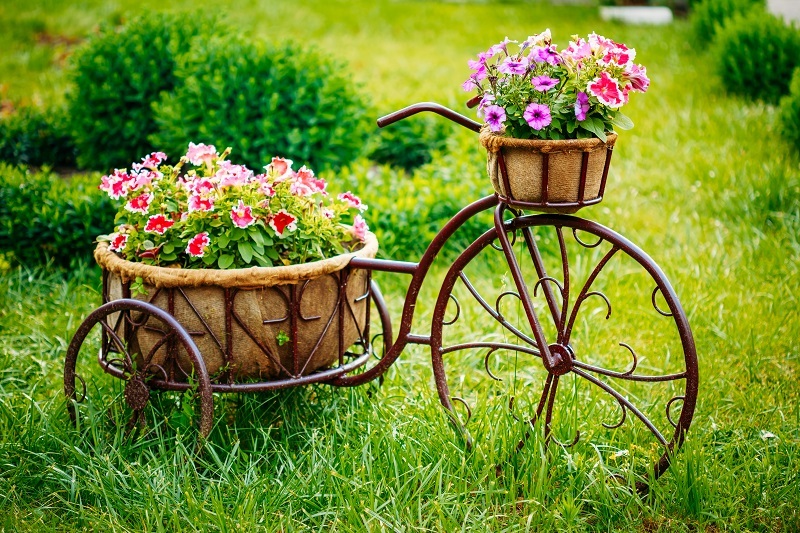Pollen stains can be particularly stubborn and unsightly, often ruining the appearance of your favorite clothing or household items. But fear not--there are effective methods for erasing pollen stains, even if they seem resistant to traditional cleaning techniques. In this guide, we'll introduce a foolproof method to combat these vexing stains, ensuring that you can keep your items looking their best.
Understanding Pollen Stains
Before diving into the cleaning process, it's essential to understand what makes pollen stains so challenging. Pollen contains pigments called flavonoids and carotenoids, which are responsible for their vivid colors. When these pigments come into contact with fabric, they can bind very strongly, making them resistant to simple washing with soap and water. Additionally, pollen grains have a sticky surface that helps them adhere to various materials, further complicating the cleaning process.
Common Sources of Pollen Stains
- Lilies: Known for their vibrant colors and strong scents, lilies produce copious amounts of pollen.
- Sunflowers: While sunflowers add cheer to any setting, their pollen can create unsightly smudges.
- Tulips: These blooms often produce fine, powdery pollen that can settle and stick to fabric quickly.
Understanding your specific pollen source can help tailor your cleaning approach for best results.

Preparation: What You'll Need
To successfully remove pollen stains, gather the following materials:
- Adhesive tape (like masking or painter's tape)
- A clean, soft brush
- A vacuum cleaner with a hose attachment
- Liquid laundry detergent
- A mild bleach solution or an oxygen-based bleach (for colored fabrics)
- White vinegar and baking soda (optional)
- Cold water
Having these items ready in advance will streamline the cleaning process, allowing for efficient and thorough stain removal.
Step-by-Step Procedure
Step 1: Dry Removal
The first step in erasing pollen stains is to remove as much dry pollen as possible. Utilize adhesive tape by pressing the sticky side gently against the stained area. Make sure not to rub, as this can spread and embed the pollen further into the fabric. Alternatively, you can use a soft brush to loosen and lift the particles.
If available, use a vacuum cleaner with a hose attachment to remove remaining pollen grains. This method ensures that loose particles are completely eliminated without pushing them into the fabric.
Step 2: Pretreatment
Apply liquid detergent directly to the stained area. Gently rub the detergent into the fabric using your fingers or a soft brush. Allow it to sit for about 10-15 minutes. This pre-treatment phase helps break down the pollen pigments, making them easier to remove during washing.
For light-colored fabrics, a mild bleach solution may be added to the affected area. If using an oxygen-based bleach, follow the instructions on the packaging to avoid damaging your fabric.
Step 3: Washing
Wash the stained item in cold water. Hot water can set the stain, making it more difficult to remove. Use your usual laundry detergent, but consider adding a bit more than usual for heavily stained items. Check the fabric label for any specific washing instructions to avoid damage.
For an additional boost, add white vinegar and baking soda to the washing machine. Vinegar acts as a natural stain remover, while baking soda enhances the detergent's cleaning power. The combination also helps deodorize fabrics, ensuring a fresh and clean finish.
Step 4: Inspection
Before drying, carefully inspect the stained area. If the stain is still visible, repeat the pre-treatment and washing steps. Avoid putting the item into the dryer until the stain is fully removed, as heat can permanently set the stain.
Step 5: Drying
Once the stain has been successfully removed, dry the item according to the fabric care instructions. Air drying is often the best option, as it prevents potential heat damage and allows for a final inspection under natural light.

Additional Tips and Tricks
While the aforementioned steps offer a guaranteed method for erasing pollen stains, additional tips can help in maintaining pristine fabrics over time.
Opt for Protective Measures
When handling flowers indoors, consider placing a cloth or paper under the vase to catch falling pollen. This can protect both your table surfaces and any surrounding items from potential staining.
Regular Maintenance
For outdoor fabrics like patio cushions or garden umbrellas, regular vacuuming can help remove pollen before it settles deeply. Utilize a vacuum cleaner with an appropriate attachment for thorough removal.
Test Before Treating
Always perform a spot test when using any new cleaning product on fabrics. Apply the product to a hidden area to ensure it doesn't cause discoloration or damage. This precaution is especially important for delicate or expensive items.
Conclusion
Erasing pollen stains may seem daunting, but with the right approach and materials, it's entirely manageable. From the initial dry removal to effective washing techniques, each step plays a crucial role in tackling these stubborn stains. Remember, the key is in patience and persistence, as thorough treatment will ensure your items remain stain-free.
Implementing these methods will not only extend the lifespan of your fabrics but also keep them looking fresh and clean, regardless of pollen exposure. Don't let pollen stains ruin the aesthetic of your favorite items--take control with this comprehensive and guaranteed method.

